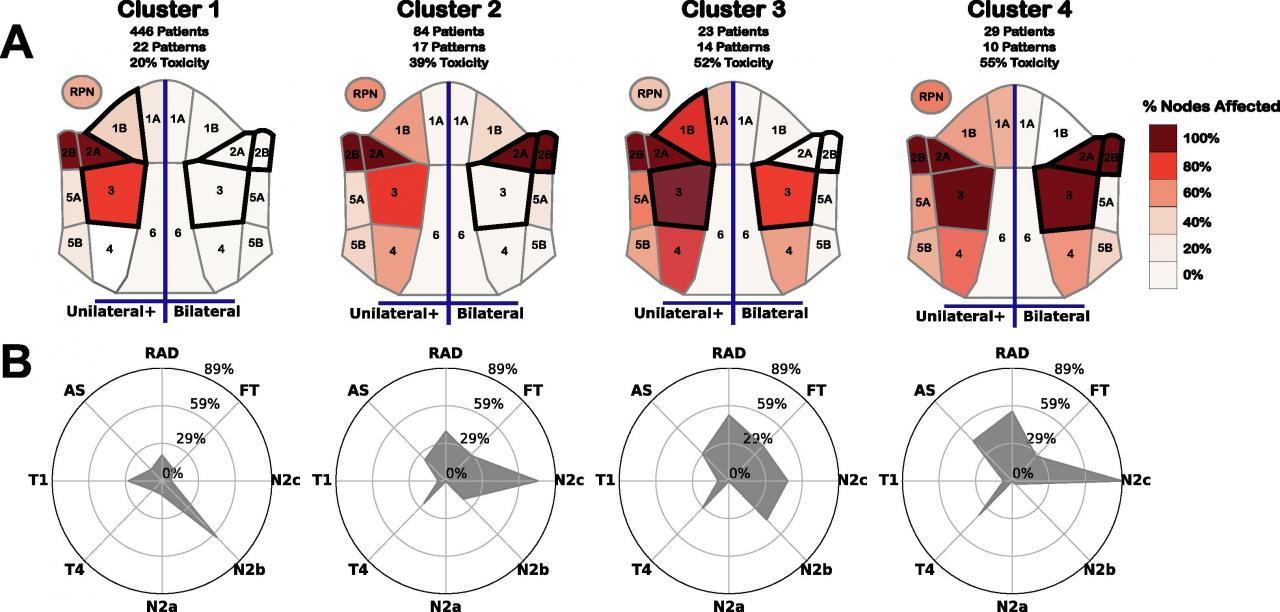|
|
||||||||||||||||||
Precision association of lymphatic disease spread with radiation-associated toxicity in oropharyngeal squamous carcinomas
Authors: Wentzel, A., Luciani, T., van Dijk, L., Taku, N., Elgohari, B., Mohamed, A.S.R., Canahuate, G., Fuller, C.D., Vock, D., Marai, G.E.
Publication: Radiotherapy and Oncology, vol 161, Elsevier, pp. 152–158 URL: https://doi.org/10.1016/j.radonc.2021.06.016 Purpose: To determine whether patient similarity in terms of head and neck cancer spread through lymph nodes correlates significantly with radiation-associated toxicity. Materials and methods: 582 head and neck cancer patients received radiotherapy for oropharyngeal cancer (OPC) and had non-metastatic affected lymph nodes in the head and neck. Affected lymph nodes were segmented from pretreatment contrast-enhanced tomography scans and categorized according to consensus guidelines. Similar patients were clustered into 4 groups according to a graph-based representation of disease spread through affected lymph nodes. Correlation between dysphagia-associated symptoms and patient groups was calculated. Results: Out of 582 patients, 26% (152) experienced toxicity during a follow-up evaluation 6 months after completion of radiotherapy treatment. Patient groups identified by our approach were significantly correlated with dysphagia, feeding tube, and aspiration toxicity (p < .0005). Discussion: Our results suggest that structural geometry-aware characterization of affected lymph nodes can be used to better predict radiation-associated dysphagia at time of diagnosis, and better inform treatment guidelines. Conclusion: Our work successfully stratified a patient cohort into similar groups using a structural geometry, graph-encoding of affected lymph nodes in oropharyngeal cancer patients, that were predictive of late radiation-associated dysphagia and toxicity. Date: June 11, 2021 Document: View PDF |